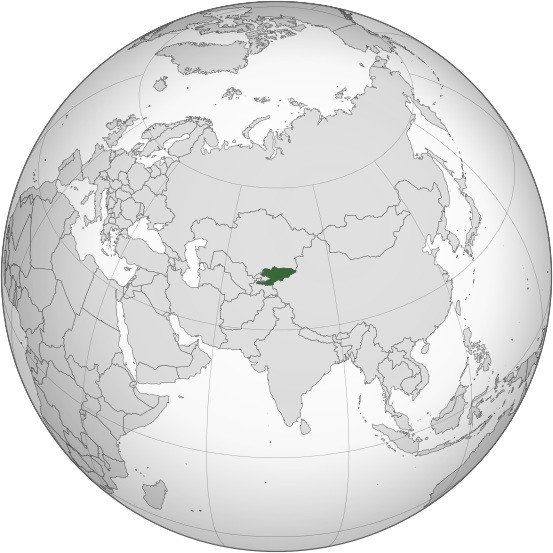BISHKEK (TCA) — Kyrgyzstan’s development results for 2016 are encouraging because the country has not faced major upheavals. According to Kyrgyz President Almazbek Atambayev, Kyrgyzstan has shown the best results in terms of economic growth among the CIS countries according to international statistical standards.
However, experts say that about 40% of the country’s economy is in the shadow.
The hopes for rapid economic development have not materialized, and the country’s external debt has grown so as to exceed GDP.
During the past year, not a single major project has been implemented. Plans for the rehabilitation of idle plants and their transfer and sale to effective owners have not been performed as well. The project to transfer excessive production capacities from China to Kyrgyzstan, mainly to Kyrgyz idle enterprises, has not moved beyond discussions.
The National Sustainable Development Strategy for 2013-2017 (NSDS) outlined the economic priorities that, in five years, should have a significant impact on the economy, national budget and labor market. Those priorities include high added value production, increasing tax revenue, job creation, and unemployment reduction.
According to NSDS, macroeconomic stability should be maintained by the following key quantitative indicators: average annual GDP growth at not less than 7%, inflation at 5%-7%, budget deficit at not more than 5% of GDP, and the external public debt at below 60% of GDP. Most of these tasks have not been performed.
State debt and GDP
Kyrgyzstan’s public debt consists of external debt (97%) and internal debt (3%).
Reaching a record high over 25 years since independence, as of October 31, 2016, the public debt amounted to $4.92 billion, of which $3.78 billion was the external debt and $309.4 million the internal debt. According to the Finance Ministry, in the national currency (the som) the debt had decreased by 9 billion soms (down to 280.9 billion soms) due to the strengthening of the som by more than 9% since the beginning of 2016.
Kyrgyzstan owes 75.4% of its external debt to three main creditors, the Export-Import Bank of China, the World Bank and the Asian Development Bank. Kyrgyzstan owes Eximbank $1.49 billion, more than 38% of its external debt.
In 2006, Kyrgyzstan’s state debt was $2.16 billion, and has more than doubled over ten years.
The country needs to attract direct investment, develop production, and expand the market of domestic borrowing. Instead, the Government continues to borrow from external creditors.
According to NSDS and Kyrgyz legislation, the external debt shall not exceed 60% of GDP. At the beginning of 2016, it exceeded the threshold but last fall the Government adopted new indicators to assess the debt’s sustainability including a ratio of the external debt to budget revenues and the amount of the external debt’s servicing to budget expenditures. As a result, the public debt now does not exceed the established limit.
Kyrgyzstan’s National Statistics Committee recorded a 3.2% GDP growth for 11 months of 2016 compared to a 2.3% decrease in the first half-year.
Kyrgyzstan also had 1.5% deflation in the first 11 months of 2016.
In August 2016, the World Bank changed its initial forecast of Kyrgyzstan’s GDP growth for 2016 from 4.2% to 3.4%. According to the Bank, GDP growth will be even lower (3.1%) in 2017 and is expected to rise to 4.1% in 2018.
Migrant workers
A significant part of Kyrgyzstan’s economically active population (according to various estimates, every third or fifth person) is working in Russia, paying taxes in Russia and not to Kyrgyzstan.
Remittances of Kyrgyz labor migrants from Russia, Kazakhstan, Turkey and other countries increased by $240.5 million in January-October 2016 on-year and amounted to $1.66 billion, Kyrgyzstan’s National Bank said. This money supported the demand in the local real estate market and the construction sector, and maintained labor migrants’ families.
Problems
Problems that hinder the national economy’s development include the unhealthy competition environment and the lack of protection of investments and business. With a limited state budget, the country has redundant system of government.
Since 1992, the Kyrgyz state has signed loan and grant agreements with international financial institutions and donor countries worth more than $7.5 billion. However, analysis of economic efficiency of the external financial assistance has not been done so far.
There are many gaps and challenges in the implementation of investment projects. There is no comprehensive strategy for attraction of FDI, including objectives, priorities, expected socio-economic impact, and implementation mechanisms, experts say.
Objectives
Planning the future, the Kyrgyz Government should properly assess the state of the economy, its strong and weak aspects. It is vital to stop spraying financial resources. “The Government should select the priorities and focus efforts on them, and pay less attention to insignificant projects with a lot of noise but little results for the country,” local expert Kubat Rakhimov says.
Kyrgyzstan should move to a model of large corporations and develop a tax collection system stimulating deductions instead of tax relief. It is necessary to consolidate national business and shift to the international principles of corporate activity and investment through securities but not through credit instruments only, he added.
Independent sociological and econometric researches should assess real processes in the non-observed economy. Official statistics do not cover the smallest business entities and shadow business. There is a gap between the fiscal accounting and the actual flow of goods and services, which was revealed after the abolition of customs controls at Kyrgyzstan’s borders with the Eurasian Union member countries.
In 2017, the state should be especially careful when making decisions, experts warn. There will be a strong populist pressure related to the upcoming presidential elections and a desire to borrow money to spend for some large-scale projects.

